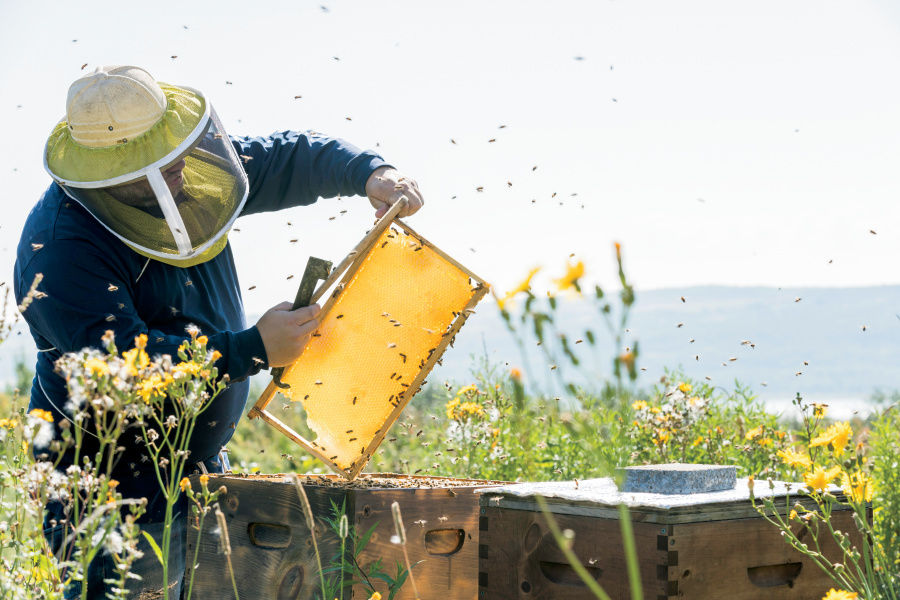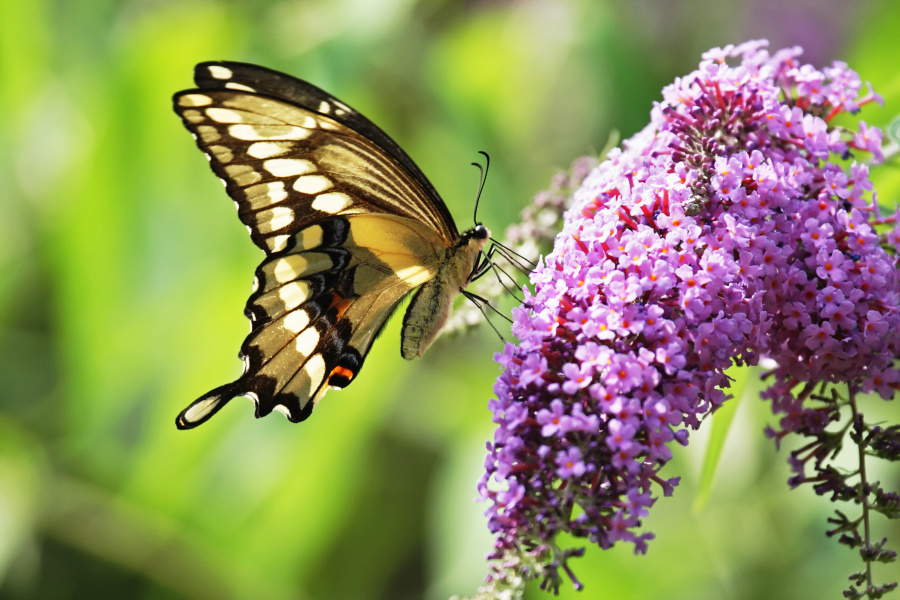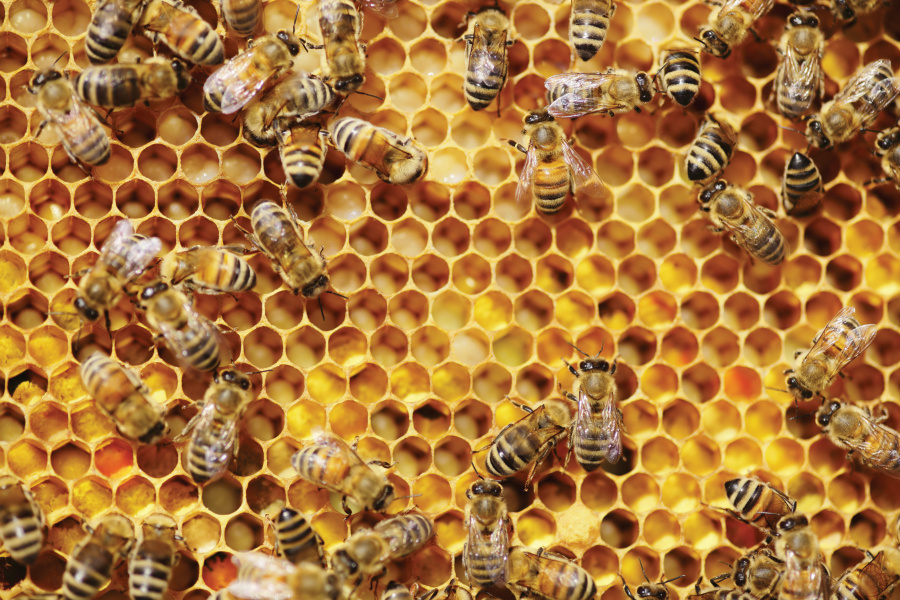Home > Virginia > Virginia Farm to Table > What’s the Buzz on Virginia Pollinators?
What’s the Buzz on Virginia Pollinators?
In partnership with: Virginia Department of Agriculture and Consumer Services

Honeybees are powerful creatures – without their pollinating capabilities, the agriculture industry would struggle to produce the ample supply of the fruits and vegetables consumers enjoy every day. Because of this, the fact that honeybee colonies have been disappearing at alarming rates in recent years raises red flags in the minds of people like Keith Tignor, Virginia’s state apiarist.
“The decrease in honeybee populations is an international problem – there are concerns about honeybees all over the world,” Tignor says. “Back in the 1980s, we began seeing honeybee pests and diseases in the U.S. that our bees hadn’t been exposed to, and it really came to a head in the early 2000s when we started seeing higher than normal colony losses, particularly over the winter months.”
Thirty years ago, those who work with honeybees in Virginia anticipated losing between 5 and 10 percent of honeybee colonies. What actually happened the winter of 2017-18 came as a shock.
“We actually lost close to 60 percent of our honeybees in Virginia last winter,” Tignor says.
Why are bees dying, you ask? The answer is complex.
“Lots of things have affected our bees over the past 30 years, from viruses and colony collapse disorder to pests including varroa mites, small hive beetles and tracheal mites,” Tignor explains. “Varroa mites are our No. 1 concern. They feed on both the larvae and adult bees and also transmit viruses and diseases that cause deformed wings and other problems.”
As Virginia’s state apiarist, Tignor and other hive inspectors across the state regularly inspect beekeepers’ hives to make sure they are healthy and disease-free. They also provide outreach and educational programming to help beekeepers recognize diseases and pests, and train people on how to start and maintain beehives.

Pollinator Protection Plan
Some consumers have worried about the impact certain pesticides used by agricultural workers may have on honeybee populations, and that’s why the Virginia Department of Agriculture and Consumer Services (VDACS) launched the Pollinator Protection Plan in 2018. The plan is a voluntary, proactive approach that focuses on helping agricultural producers, landowners and pesticide applicators better communicate with beekeepers to minimize the risk of unintentional pesticide exposure to pollinators.
“We’ve been reaching out to beekeepers to get their hives entered into an online map, and that’s been very successful so far,” Tignor says. “We’re now notifying pesticide applicators about this service so they can let beekeepers know when they plan to use pesticides. One way to limit the bees’ exposure has to do with the time of day applications are made – bees are out more in the mornings, so we’re asking pesticides to not be applied until afternoons to minimize the exposure to bees.”
VDACS also has a Pollinator Protection Strategy in place that will hopefully improve Virginia’s environment for all pollinators, beyond just the honeybees. Other bee species, butterflies, moths, birds and bats are also pollinators.
“We’re looking at the broader picture of how to improve habitats and sustain bees and other pollinators,” Tignor says.

Beehive Distribution Program
In 2018, Virginia also established a new Beehive Distribution Program that is increasing the number of actively managed bee colonies across the Commonwealth. Administered by VDACS, the Beehive Distribution Program provides beehive equipment free of charge directly to eligible beekeepers. Applicants must be at least 18 years old and must keep the hives in Virginia.
Recipients of the free beehive equipment are responsible for purchasing their own bees or collecting feral bee swarms, providing their own protective clothing and allowing periodic inspections of their hives. By submitting an application, they will be registered as a beekeeper with VDACS.
“We’ve had a tremendous response. Beekeeping is something people are very interested in doing,” Tignor says. “All you need is 2 square feet of space to put the hive on. Then the bees typically travel 2 miles out in every direction.”
The response to the Beehive Distribution Program was so enthusiastic that VDACS had to close the applications for 2018 due to limited funding. During the month of July, more than 2,700 people applied to receive beehives through the program.
“We anticipate that we will be able to open up the application process again in July 2019 so more people can participate,” Tignor says. “It’s amazing the diverse group of people who are involved in beekeeping, from children to retirees in both rural and urban settings. There are commercial beekeepers who do it for a living, and there are also teachers, lawyers, doctors and mechanics who do it and bring their own expertise to beekeeping.”
Increasing the number of hives in Virginia will help ensure there are enough honeybees to pollinate crops such as apples, peaches and squash for years to come.
“Bees are very important,” Tignor says. “We attribute their pollination to the production of more than 80 plants and crops.”




Thank you for the beehive distribution- Great program to help increase the number of bee keepers in our state and the rural area of Southwest VA.